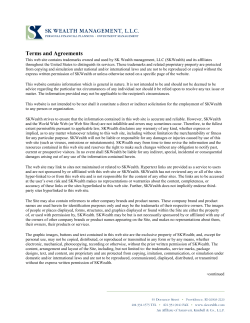
The Toitoi Land
The Toitoi Land A South Island Landless Natives Act 1906 (SILNA) Block Contents Message from the Māori Land Court .................................................. 2 Owners of the Toitoi Land ................................................................... 3 The vesting process ............................................................................ 5 What are the SILNA lands? ................................................................. 7 The Toitoi Land .................................................................................... 8 Information hui ................................................................................... 11 1 Message from the Māori Land Court The Toitoi Land had its ownership confirmed by the Māori Land Court in September 2013. The Crown is now seeking to vest the Toitoi Land in its owners. The process to vest the Toitoi Land is determined by the Ngāi Tahu Deed of Settlement (Ngāi Tahu Deed) and the Ngāi Tahu Claims Settlement Act 1998 (Ngāi Tahu Act). The owners must decide how they wish to receive the Land, and what kind of entity will manage it. In the coming weeks, information hui will be held in Kaikōura and Christchurch for owners to ask questions about the processes to vest the land. I encourage all owners and possible owners to attend at least one of these meetings: 1 Location Kaikōura 2 Christchurch Venue Lobster Inn Motor Lodge 115 Beach Rd Kaikōura Māori Land Court 76 Peterborough St Christchurch Date / Time Saturday 18 October 2014 2.00pm Saturday 1 November 2014 2.00pm During the vesting process, owners can choose to renegotiate specific aspects of the Toitoi Land. This information booklet provides important information on the process to vest the land and links for further information. Ngā mihi, Carol Smith Registrar Māori Land Court Te Waipounamu 2 Owners of the Toitoi Land There are approximately 1,800 owners of the Toitoi Land. They are the descendants of the original owners of the land, who were named at the beginning of the twentieth century. The present-day list of owners was confirmed by the Māori Land Court in September 2013. It was determined through consultation with Te Rūnanga o Ngāi Tahu. Te Rūnanga o Ngāi Tahu provided information to the Māori Land Court on who the descendants of the original owners are. This information was then cross referenced with the records of the Māori Land Court, and the Māori Land Court then produced a list of owners. Figure 1. Approximate location of the Toitoi Land on Rakiura / Stewart Island. 3 Shares Owners hold shares in the land. There is a combined total of 6,961.519 shares. Owners were allocated shares based on how many descendants there are from the original owner. For example, if a person had 10 shares and five children, each child will receive two shares on succeeding to their parent’s interest. This is usually when a parent dies, but can be before then if processed through the Māori Land Court. The full list of owners and their shareholdings is available on the following websites: The Māori Land Court: o www.justice.govt.nz/courts/maori-land-court Te Puni Kōkiri: o www.tpk.govt.nz Voting rights Only owners included on the official list of owners will have rights to voting. The voting process is determined by the Māori Assembled Owners Regulations 1995 (the Regulations). The results of the vote must be recognised by a Māori Land Court judge. If the owners do not make a decision in accordance with the procedures set out in the Regulations to adopt any one of their options, the Ngāi Tahu Act states they must be deemed to have chosen the option which received the most votes in accordance with those procedures (Section 455(4)). More information about voting rights can be found on the websites above, or through the New Zealand Legislation website, www.legislation.govt.nz. 4 The vesting process The process to vest the Toitoi Land was decided during settlement negotiations between Ngāi Tahu and the Crown in the late 1990s. The resulting process requires owners to vote on how they wish to receive the land. Owners also have the opportunity to appoint representatives to renegotiate certain aspects of the land. The entire process is determined by the Ngāi Tahu Deed, the Ngāi Tahu Act and Māori Land Court rules. Voting to receive the land Ultimately, owners will need to make two key decisions: 1. whether the land will be vested as Māori Freehold Land or General Land; and 2. the manner in which the land will be held, and who will look after it. These decisions will be made by a vote under the Regulations. The results of the vote must be recognised by a Māori Land Court judge. If the owners do not make a decision in accordance with the procedures set out in the Regulations to adopt any one of their options, the Ngāi Tahu Act states that the owners can be deemed to have chosen the option which received the most votes in accordance with those procedures (Section 455(4)). Option to renegotiate Before voting to receive the Toitoi Land based on the two key decisions above, owners have an option to renegotiate aspects of the land. The aspects of the Toitoi Land that can be renegotiated are: the vesting of the Toitoi Land in the beneficiaries but with alternative land boundaries as negotiated between their representatives and the Crown; or any other form of redress, taking into consideration the market value of the Toitoi Land. If the owners wish to renegotiate, they can appoint up to 10 representatives to do so. If the owners decide to appoint representatives, the Māori Land Court will hold assembled owners meetings for this purpose. 5 Assembled Owners Meetings Voting to vest the land or to appoint representatives must happen at assembled owners meetings held in accordance with the Regulations. These hui will be notified in newspapers and on the websites for the Māori Land Court and Te Puni Kōkiri. Owners who supply their contact details to the Māori Land Court can also receive notification by mail. The contact details for the Māori Land Court are on the last page of this booklet. More information on the vesting processes for the Toitoi Land can be found in Sections 454 and 455 of the Ngāi Tahu Act; and clause 15.5.2(b)(ii) of the Ngāi Tahu Deed. This information is available for your viewing on the following websites: The Māori Land Court: o www.justice.govt.nz/courts/maori-land-court Te Puni Kōkiri: o www.tpk.govt.nz 6 What are the SILNA lands? The South Island Landless Natives Act 1906 SILNA is the South Island Landless Natives Act 1906. This Act awarded blocks of land to approximately 4,000 South Island Māori. The majority of these SILNA land blocks were successfully vested in their owners, and they continue to be managed today on behalf of their beneficial owners. Unallocated lands The SILNA Act, however, was repealed by the Native Land Act 1909 before all SILNA land blocks were successfully vested in their owners. The four blocks of land that were not vested were: the Hāwea-Wānaka Land; the Toitoi Land; the Port Adventure Land; and the Whakapoai Land. Section 15 of the Ngāi Tahu Deed of Settlement acknowledged the failure by the Crown to implement the allocation of these land blocks to their owners. The Crown continues to work on the vesting arrangements for the HāweaWānaka Land, the Port Adventure Land and Whakapoai Land. The ownership of the Toitoi Land is unique to those blocks, and the process to vest it is separate to all other SILNA lands. 7 The Toitoi Land The Toitoi Land is located on Rakiura / Stewart Island. It includes the area where Toitoi River flows into Toitoi Bay. It also includes much of the Toi Toi Wetland, a statutory area under the Ngāi Tahu Act. The Toitoi Land is in the Lords River Survey District. The Toitoi Land legal description is “all that land situated in Southland Land District, Southland District, comprising 2,994.6738 hectares, more or less, being Parts Block IV, V, VI, VII and VIII, Lords River Survey District, Part Gazette 1908, page 1514”. The Toitoi Land is approximately 2,994.7 ha. It is covered in native bush and is similar to public reserves on the island. The land is currently administered by Land Information New Zealand. Figure 2. Approximate boundaries of the Toitoi Land, topographical map. 8 The ToiToi Land Value In 2012, the Toitoi Land was valued at $4,000,000. The property is listed by the Southland District Council as a Reserve, so it is currently non-rateable. The Toitoi Land has not recently been surveyed. It will need to be surveyed to define its boundaries for vesting in its owners (or to negotiate an alternative form of redress). The costs of survey will be met by the Crown. Figure 3. Property map of the Toitoi Land, Land Information New Zealand. 9 The Toi Toi Wetland The Toi Toi Wetland is a statutory area under the Ngāi Tahu Act. It is administered by the Department of Conservation. The Toi Toi Wetland is approximately 1,111 ha. It overlaps with the Toitoi Land and the neighbouring Rakiura National Park land. It is also partially within the Lords River – TutaeKaWetoweto Nature Reserve (see Figure 4). Schedule 63 of the Ngāi Tahu Act sets out the Ngāi Tahu associations with the Toi Toi area. It states that Te Rūnanga o Ngāi Tahu must be consulted on management and administration activities undertaken by the Crown relating to the land, administered by the Figure 4. The Toi Toi Wetland Department of Conservation. (D480009) overlaps with the Toitoi The Toi Toi Wetland is a habitat for kakapō. Land and the neighbouring Rakiura National Park land. Nearby properties and their forests Nearby to the Toitoi Land are several sections of land that contain virgin indigenous vegetation and wildlife. These lands include other SILNA land blocks that were successfully vested in their owners at the beginning of the twentieth century. This includes approximately 3,510 ha of SILNA land covered by the TutaeKa-Wetoweto Forest Act 2001. Under this Act, the Rakiura Māori Land Trust (the owners of that land) entered into a conservation covenant with the Minister of Conservation in which they retain full tangata whenua rights whilst also recognising the distinctive quality of the land and the importance of its natural features, warranting its ongoing preservation for the benefit of its owners and the New Zealand public. Another nearby land block is the unallocated SILNA land, the Port Adventure Land. 10 Information hui Information hui will be held in Kaikōura and Christchurch so that owners can find out more about the Toitoi Land and the processes to vest it (or an alternative form of redress) in the owners. The meetings will also be an opportunity for owners to begin considering how they would like to receive the land, or if there is sufficient interest to appoint representatives to renegotiate aspects of the land. We encourage all owners and possible owners to attend at least one of these meetings. 1 Location Kaikōura 2 Christchurch Venue Lobster Inn Motor Lodge 115 Beach Rd Kaikōura Māori Land Court 76 Peterborough St Christchurch 11 Date / Time Saturday 18 October 2014 2.00pm Saturday 1 November 2014 2.00pm Notes 12 For more information If you have questions or want more information on matters described in this booklet, contact The Māori Land Court or Te Puni Kōkiri on the details below. The Māori Land Court The Registrar, Te Waipounamu District DX Box WX11124 CHRISTCHURCH (Phone) (03) 962 4900 (Email) mlctewaipounamu@justice.govt.nz (Website) www.justice.govt.nz/courts/maori-land-court Te Puni Kōkiri The Manager, Treaty Settlements PO Box 3943 WELLINGTON (Phone) 04 819 6000 (Email) ToitoiLandInfo@tpk.govt.nz (Website) www.tpk.govt.nz 13
© Copyright 2025












